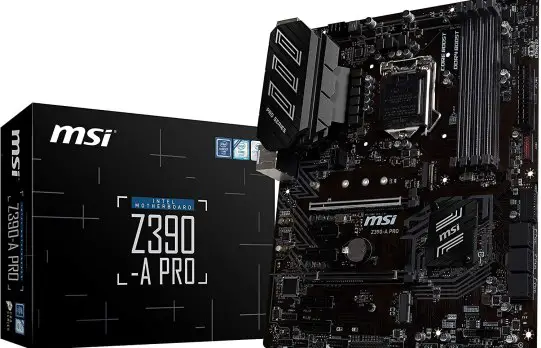Review and testing of the AMD Radeon RX 560X video card: Test | Specs | CPU | Confi – The Radeon RX 560X video card is a graphics adapter for laptops that replaced the Radeon RX 560. In fact, the new product is a rebranding of the Radeon RX 560, in which the manufacturer slightly increased the frequencies, so you should not expect a tangible increase in performance in games
. AMD Radeon RX 560X, based on 14nm GPU AMD Polaris 21, has 1024 stream processors, 64 texture units and 16 ROP units. The frequency formula is 1175/1275 MHz, which is exactly the same as the desktop version. The built-in GDDR5 memory is 4 GB, and its effective frequency is at 6000 MHz versus 7000 MHz for the desktop version.
As already noted, the Radeon RX 560X graphics card is based on the Polaris 21 architecture, which is essentially an optimized version of last year’s Polaris 11 GPU, in terms of micro and macro architecture, absolutely nothing has changed in it. However, a Polaris 21 crystal with a fully unlocked CU array automatically gains a 14% bandwidth advantage for shader ALUs and texture mappers, even without accounting for changes in clock speeds, compared to both commercial Polaris 11 samples and Bonaire / Tobago chips, which AMD used the Radeon R7 260/360 series.
The Radeon RX 560X has full support for modern gaming APIs, which include DirectX 12, OpenGL 4.5 and Vulcan 1.0, as well as the professional API – OpenCL 2.0. The video card also boasts a proprietary hardware encoder called AMD VCE.
Specifications
| CPU |
|---|
| Polaris 11(Polaris 21) |
| Technical process |
| 14 n.m. |
| GPU frequency MHz |
| 1172 – 1275 MHz |
| Stream Processors (Shading Units) |
| 1024 |
| Texture Units (TMUs) |
| 64 |
| Raster Operations Pipelines (ROPs) |
| 16 |
| Memory type |
| GDDR5 |
| Memory bus width |
| 128 pages |
| Memory size |
| 4 GB |
| Memory frequency |
| 1500 (6000) MHz |
| Power consumption (TDP) |
| 65 watts |
Synthetic tests
3DMark
3DMark Fire Strike is a beautiful and popular application with DirectX 11 API support for testing computers with high-performance gaming graphics cards in the Windows environment. 3DMark Fire Strike results help you evaluate the comparative performance of a video card and its suitability for the most demanding PC games.
3DMark – Fire Strike Graphics 1920×1080
AMD Radeon RX 550 (Lenovo IdeaPad 720)
5060
NVIDIA GeForce GTX 960M (MSI GL72 6QF )
4705
NVIDIA GeForce GTX 950M (Acer Aspire F15 F5-573G )
3556
NVIDIA GeForce GTX 1050 (Acer Aspire 7 A715-71G)
6167
AMD Radeon RX 560Х(Asus TUF FX505DY)
6331
Literally FPS stands for “Frame per second”, or frames per second. Accordingly, the larger this number, the smoother the picture will be on the display during the game. How much FPS is needed for a comfortable game? It is difficult to unequivocally answer this question, if only because in different game engines with the same number of frames per second, the image quality can be different. However, there is a widespread belief that 30 FPS will be enough for a smooth game.
In modern games, the Radeon RX 560X will be able to provide medium, high, and in some projects even maximum graphics settings (depending on the requirements of the game) in FullHD resolution. For such a resolution, a video card will be more than enough, even a 128-bit bus does not negatively affect performance. But for UltraHD (4K) resolution, the performance of this video card is clearly not enough. In fact, the Radeon RX 560X is a budget-level graphics adapter and you should not expect high results from it. The performance of the RX 560X graphics card will not be enough to play most of the top-end shooters and action games comfortably at maximum graphics settings. But RPGs are quite playable, as are online projects with good optimization. Next, we tested the AMD Radeon RX 560X in popular games at high graphics settings with a display resolution of 1920 x 1080 pixels, based on 60 frames per second (FPS).
Display resolution: 1920×1080 pixels. Graphics Settings: High
60FPS
Darksiders III
32FPS53%
Far Cry New Dawn
36FPS60%
Metro Exodus
18FPS30%
Battlefield V
45FPS80%
Call of Duty Black Ops 4
46FPS82%
Just Cause 4
29FPS48%
Display resolution: 1920×1080 pixels. Graphics Settings: High
60FPS
Shadow of the Tomb Raider
26FPS43%
Fallout 76
34FPS56%
Assassin´s Creed Odyssey
21FPS35%
Middle-earth: Shadow of War
31FPS51%
The Witcher 3
38FPS63%
Apex Legends
37FPS61%















